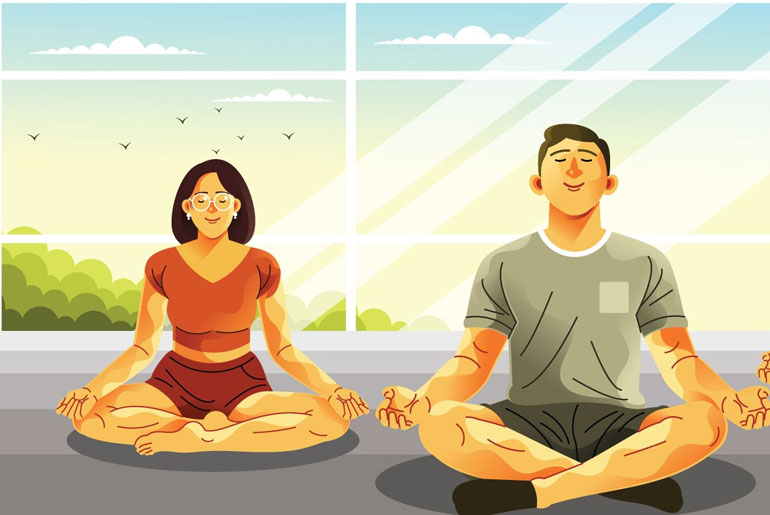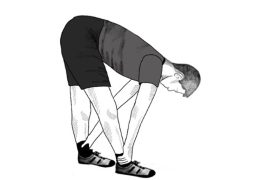According to experts, yoga is a versatile fitness practice that can be adapted to accommodate individuals of all ages, body types, and health conditions. Yoga instructors are skilled in modifying poses, adjusting sequences, and incorporating props such as blocks, straps, and bolsters to make the practice accessible and beneficial for everyone. This adaptability allows individuals with varying physical abilities or limitations to participate safely and effectively in yoga sessions tailored to their specific needs. Whether someone is new to fitness or dealing with health concerns, yoga offers a flexible approach to improving strength, flexibility, and overall well-being.
Teaching yoga to children and teens:
When teaching yoga to children and teens, it’s important to create an engaging and age-appropriate environment that fosters both physical and mental development.
- Incorporate Playful Elements: Introduce animal poses or partner poses to make the practice fun and relatable for children. This helps them connect with yoga through imagination and play.
- Focus on Physical Development: Emphasize building strength, flexibility, and balance using poses that are suitable for their age and physical abilities. Adapt traditional poses to be more accessible and enjoyable for young practitioners.
- Manage Session Length: Keep yoga sessions shorter to align with their attention spans and energy levels. This ensures they remain engaged throughout the practice and derive maximum benefit from each session.
- Encourage Self-Expression: Incorporate yoga games, storytelling, and creative activities that allow children to express themselves freely. This cultivates their creativity while reinforcing the principles of mindfulness and relaxation.
By integrating these principles into yoga sessions for children and teens, instructors can create a positive and enriching experience that supports their physical health, mental well-being, and overall development.
Individuals with specific health conditions:
When guiding individuals with specific health conditions in yoga practice, it’s crucial to prioritize safety, adaptation, and informed decision-making.
- Consultation with Healthcare Professionals: Encourage individuals to consult with their healthcare provider before starting yoga, especially if they have chronic conditions or recent injuries. This ensures that any concerns or medical considerations are addressed, and that yoga practice aligns with their overall treatment plan.
- Pose Modification and Adaptation: Modify yoga poses to accommodate physical limitations or pain. Avoid movements that may exacerbate existing issues and instead offer variations or alternatives that are more suitable. Use props such as blocks, straps, or bolsters to provide support and enhance comfort during practice.
- Specialized Classes or Private Sessions: Recommend specialized yoga classes or private sessions tailored to specific health concerns, such as Yoga for arthritis, Yoga for back pain, or Yoga for anxiety. These classes are designed to address particular needs and provide targeted exercises and techniques beneficial for managing symptoms
- Education on Benefits and Self-Care: Educate individuals or students about the benefits of yoga for managing symptoms and improving overall well-being. Emphasize the importance of mindfulness, breath awareness, and practicing self-care during sessions. Encourage participants to listen to their bodies, honor their limitations, and avoid pushing themselves beyond their comfort zone.
By adopting these practices, yoga instructors can create a supportive and empowering environment for individuals with specific health conditions. This approach not only enhances their physical and mental well-being but also fosters a sense of confidence and self-awareness in their yoga practice.
Teaching yoga to pregnant women:
When teaching yoga to pregnant women, safety and comfort are paramount. Here are detailed guidelines for effective and safe practices:
- Avoiding Abdominal Compression: Ensure that poses which compress the abdomen or put pressure on the belly, such as deep twists or intense backbends, are avoided. These can be substituted with safer alternatives that provide similar benefits without risking discomfort or harm to the baby.
- Modifying Poses for Balance: Modify yoga poses to accommodate changes in balance and center of gravity that occur during pregnancy. Use props like blocks, bolsters, or chairs to provide support and stability, especially during standing or balancing poses.
- Gentle Stretches and Strengthening: Focus on gentle stretches and strengthening exercises that prepare the body for childbirth and alleviate common pregnancy discomforts like back pain and tight muscles. These exercises should be tailored to maintain flexibility and strength without overexertion.
- Pelvic Floor Exercises and Breathing Techniques: Emphasize pelvic floor exercises (Kegel exercises) and specific breathing techniques (pranayama) that support labor, delivery, and postpartum recovery. These practices help strengthen the pelvic muscles and promote relaxation during childbirth.
By following these guidelines, yoga instructors can provide pregnant women with a safe and beneficial practice that supports their physical and emotional well-being throughout pregnancy. It’s important to encourage open communication, allowing participants to express any discomfort or concerns so that poses can be further adapted to suit their individual needs.
Teaching yoga to seniors:
When teaching yoga to seniors, it’s crucial to prioritize their safety, comfort, and specific needs related to aging. Here’s a detailed summary of effective practices:
- Gentle Movements and Poses: Focus on gentle yoga movements and poses that improve mobility, flexibility, and balance. These should be adapted to accommodate varying levels of physical ability and comfort.
- Use of Props for Support: Utilize chairs, blocks, straps, or other props to provide support during standing poses or balance exercises. This enhances stability and confidence while reducing the risk of falls or strain.
- Incorporate Seated Poses and Stretches: Include seated poses and stretches to cater to seniors with limited mobility or joint issues. Seated yoga allows participants to benefit from stretching and strengthening without putting undue stress on joints or muscles.
- Breath Awareness and Relaxation: Emphasize the importance of breath awareness (pranayama) and relaxation techniques for stress reduction, improved sleep quality, and overall well-being. Teach techniques like deep breathing, guided relaxation, and mindfulness to promote mental clarity and relaxation.
By integrating these elements into yoga classes for seniors, instructors can create a supportive and inclusive environment that enhances physical health, promotes balance and flexibility, and fosters mental relaxation and emotional well-being.
Teaching yoga to adults:
When teaching yoga to adults, it’s essential to cater to their diverse needs and preferences while focusing on their overall well-being and specific concerns. Here’s a detailed summary of effective approaches:
- Offer Variety of Options: Provide a range of yoga styles to accommodate different fitness levels and preferences. Options may include gentle yoga for beginners or those recovering from injuries, power yoga for those seeking a more vigorous workout, and restorative yoga for relaxation and stress relief.
- Stress Relief and Relaxation: Place a strong emphasis on stress relief and relaxation techniques, especially beneficial for adults with busy lifestyles or high-stress jobs. Incorporate practices such as guided relaxation (savasana), yoga nidra, and deep breathing exercises (pranayama) to promote relaxation and reduce anxiety.
- Address Common Issues: Offer modifications and variations of poses to address common physical issues such as tight hips, stiff shoulders, or lower back pain. This helps participants practice yoga safely and comfortably, adapting poses to suit individual needs and limitations.
Mindfulness Practices: Integrate mindfulness practices like meditation and breathwork into sessions to enhance mental well-being. Teach techniques that help adults cultivate present-moment awareness, manage stress, and improve focus and clarity of mind.
By incorporating these elements into yoga classes for adults, instructors can create a supportive and beneficial environment that promotes physical health, reduces stress, and enhances overall well-being.
Yoga is a highly adaptable practice that can be tailored to accommodate individuals of diverse age groups, body types, and health conditions. Through modifications, variations, and specialized classes, yoga instructors can ensure that everyone, regardless of their circumstances, can access and benefit from yoga’s myriad advantages. These adaptations may involve adjusting poses, using props, or structuring classes to cater to specific needs, thereby promoting physical fitness, mental well-being, and overall health for all participants. Yoga’s versatility underscores its ability to foster inclusivity and provide personalized pathways to wellness for everyone who engages in the practice.
Disclaimer:
The information contained in this article is for educational and informational purposes only and is not intended as a health advice. We would ask you to consult a qualified professional or medical expert to gain additional knowledge before you choose to consume any product or perform any exercise.








